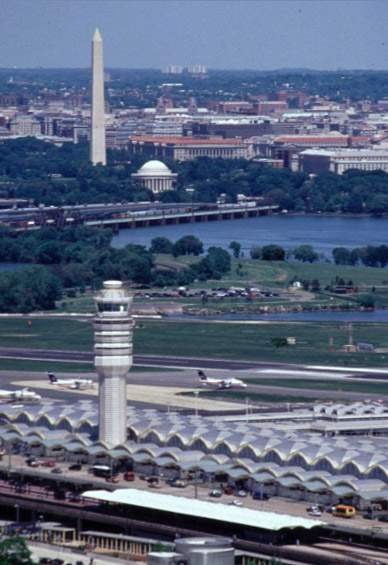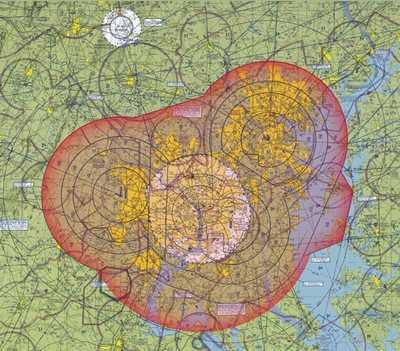Sat, Jun 07, 2003
NATA Leads Fight To Reopen Reagan National To Non-Scheduled
Commercial Flights
 It looks like progress. National Air
Transportation Association (NATA) president James K. Coyne Friday
said the association's efforts to re-open Ronald Reagan Washington
National Airport (DCA) to non-scheduled commercial air carrier
flights (charters) were beginning to show signs of success.
The centerpiece of the association's efforts is a petition filed
with the Federal Aviation Administration on March 13, 2003, seeking
a rulemaking to determine the conditions under which charter
flights could once again use the airport.
It looks like progress. National Air
Transportation Association (NATA) president James K. Coyne Friday
said the association's efforts to re-open Ronald Reagan Washington
National Airport (DCA) to non-scheduled commercial air carrier
flights (charters) were beginning to show signs of success.
The centerpiece of the association's efforts is a petition filed
with the Federal Aviation Administration on March 13, 2003, seeking
a rulemaking to determine the conditions under which charter
flights could once again use the airport.
A Bit Of Recent History
In the immediate aftermath of the September 11, 2001, terrorist
attacks, DCA was closed to all aircraft operations, scheduled and
non-scheduled. Gradually and as enhanced security
requirements have been met, airline service has been restored at
the airport to the point that DCA is operating at approximately 75
percent of its previous capacity for scheduled operations.
Non-scheduled operations, however, remain banned at the facility
despite numerous requests to use existing or similar security
practices currently followed by airlines.

"Re-opening National Airport to charter flights is one of the
association's highest priorities," Coyne said in reviewing the
organization's work to-date. "With government security
programs for charter aircraft making their security equivalent to
the scheduled airlines, all that remains is for the additional
measures necessary for operations at DCA to be applied to
non-scheduled flights. Many in Congress agree that it's time
these steps were taken and the airport opened to operators who can
comply with these more stringent requirements."
Support From Congress
Coyne said he has been meeting with aviation policy leaders on
Capitol Hill and throughout the various government agencies which
play a security role. As a direct result of the association's
efforts, numerous members of Congress have written President Bush
to request exactly what NATA's petition seeks: A set of security
and procedural rules for flying to and from DCA equivalent to those
imposed on the airlines using that facility.

"When we began our efforts in March, we knew we had a tough
fight ahead of us," Coyne said. "I'm very gratified with the
support we have received and the actions that have been
taken. In addition to the various communications from
Congress to the administration, a provision in a House aviation
security bill would mandate the same kind of rulemaking sought in
our petition. That's real progress, but we're not finished
yet."
More News
During The Forced Landing, The Airplane’s Float Struts And Spreaderbars Collapsed Analysis: While en route to a remote fishing lodge in a float-equipped airplane, one of the >[...]
"X-59 is a symbol of American ingenuity. The American spirit knows no bounds. It's part of our DNA – the desire to go farther, faster, and even quieter than anyone has ever g>[...]
Aero Linx: The Honourable Company of Air Pilots The advancement of the public interest by the promotion of safety for all those who are employed in connection with or who travel by>[...]
Minimum Friction Level The friction level specified in AC 150/5320-12, Measurement, Construction, and Maintenance of Skid Resistant Airport Pavement Surfaces, that represents the m>[...]
Aero Linx: Aerospace Industries Association (AIA) For over 100 years, the American aerospace and defense industry has shaped the world around us. From the first flight to the moon >[...]
 NTSB Final Report: Dehavilland DHC-2 MK 1
NTSB Final Report: Dehavilland DHC-2 MK 1 Aero-News: Quote of the Day (10.29.25)
Aero-News: Quote of the Day (10.29.25) ANN's Daily Aero-Linx (10.29.25)
ANN's Daily Aero-Linx (10.29.25) ANN's Daily Aero-Term (10.30.25): Minimum Friction Level
ANN's Daily Aero-Term (10.30.25): Minimum Friction Level ANN's Daily Aero-Linx (10.30.25)
ANN's Daily Aero-Linx (10.30.25)





